BOOK CATEGORIES
All ballet books are delivered worldwide by Amazon USA.

|
 Anna Pavlova: Twentieth Century Ballerina by Jane Pritchard
Anna Pavlova: Twentieth Century Ballerina by Jane Pritchard

Release Date: March 5, 2013
Anna Pavlova is a legendary ballerina. Originally from the Imperial Russian Ballet, she performed to great acclaim in Europe for various impresarios at the beginning of the 20th century including Sergei Diaghalev creator of the famous Ballets Russes. Anna Pavlova formed her own dance company in 1912 and based herself in London at Ivy House, Hampstead This book celebrates the centenary of Anna Pavlova's residency at Ivy House, Hampstead, which became her home base from 1912 until her death in 1931. The book presents a lively outline of her career, focusing on her contribution to the ballet scene in Britain.
|
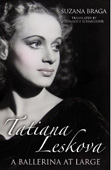 Tatiana Leskova - A Ballerina at Large by Suzan Braga
Tatiana Leskova - A Ballerina at Large by Suzan Braga

Publication Date: November 30, 2012
Tatiana Leskova was born in Paris, where she studied with Lubov Egorova and other former Imperial Russian ballerinas. She joined the Ballet de la Jeunesse then, at the age of sixteen, the Ballets Russes de Monte Carlo. She remained with the company, travelling to South America and settling in Brazil in 1945. In 1950 she joined Teatro Municipal, going on to become a principal dancer, ballet mistress and artistic director. In her ongoing freelance career, Leskova has continued to revive signature works by Leonide Massine created for the Ballets Russes. She staged Choreartium for Birmingham Royal Ballet in 1991, and Les Presages for the Paris Opera Ballet in 1989, for the Joffrey Ballet in 1994, and for the Australian Ballet in 2007.
|
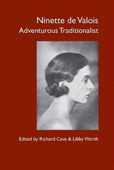 Ninette De Valois by Richard Allen Cave
Ninette De Valois by Richard Allen Cave

Ninette de Valois was gifted with myriad talents. To summarise these as dancer, choreographer, artistic director and theatre administrator tells only a fraction of her story. It has required a wealth of writers, teachers, performers, colleagues, one-time students and collaborators to come together to engage with and celebrate the complexity of this remarkable woman. More details in her portrait may be gleaned from the titles of the sections into which the volume has been divided: Biography; Teaching; Wordsmith; Company; Turkey; Choreography; Collaborations; Herself. Yet these headings merely intimate the strengths of her private inner resources (her acumen, astounding foresight, dedication, daring) and the diversity of her public achievements, the realising and the steady but relentless expanding of her vision both for a company and of the potentials of dance as an art-form. Determining those strengths and that diversity is the objective of Ninette de Valois: Adventurous Traditionalist. Writing alone, however brilliant the description or the analysis, cannot hope fully to capture the vitality of theatrical performance or the rigours of the training and rehearsal schedules that underpin its virtuosity. To help remedy this lack, the text of the book includes more than fifty photographs and a DVD, offering more than four hours of filmed material of archival value and importance to complement the written word. One intention in devising this volume has been to provide a substantial resource to assist future exploration of de Valois' life and work and appendices outline the contents of the major collections housing materials relevant to further study. The many essays here pursue divergent approaches and encompass contrasting viewpoints. But it is without question that de Valois' unparalleled success derived from her unshaken faith that ballet in its training methods and its repertoire must be both fearlessly adventurous and confidently traditionalist.
|
 Daria Klimentova - Agony and Ecstasy: My Life In Dance
Daria Klimentova - Agony and Ecstasy: My Life In Dance

Publication Date: March 4, 2013
Daria Klimentova has been one of Britain's best-loved ballerinas for two decades, having danced at Scottish Ballet and then - since 1996 - as a Principal and Senior Principal at English National Ballet. Her repertory encompasses all of ballet's classic roles including the double role or Odette/Odile in Swan Lake. Her performances as the white and black swan at the Royal Albert Hall were the subject of a behind-the-scenes BBC Documentary in 2011. Daria was born in the former Czechoslovakia and lived under the rule of the Soviet Union until the Velvet Revolution of 1989. She initially trained as a young member of the Czech Olympic Gymnastics Squad before transferring to ballet. After a year as a Principal dancer in the Czech National Ballet, she moved to dance with the Cape Ballet Company in South Africa, where she witnessed the end of apartheid. In her 40s, at an age when most ballerinas have retired, Daria continues to captivate audiences with her impeccable technique and free flowing natural grandeur. In the twilight of her career, Daria had forged a remarkable partnership with the young Russian Principal, Vadim Muntagirov, which critics have likened to the Fonteyn/Nureyev dynamic. Daria was awarded the Critic's Circle Patron's Award by Dame Beryl Grey in 2011 and the National Dance Award for Best Female Dancer in 2012. Away fom ballet Daria is an accoplished professional photographer who has exhibited her work widely. She has a dauhter, Sabine.
|
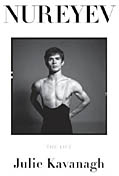 Nureyev: The Life (Hardcover) by Julie Kavanagh
Nureyev: The Life (Hardcover) by Julie Kavanagh

Rudolf Nureyev (1938–1993) made headlines when he defected from Russia in 1961. His onstage partnership with the Royal Ballet's ballerina assoluta Margot Fonteyn received legendary acclaim. Formerly a Kirov star, trained by the famed ballet teacher Alexander Pushkin and inspired by Nijinsky and Stanislavsky, he shocked and seduced the West with his charismatic stage presence and his passionate, sometimes rough-edged dancing. British ballet critic Kavanagh (Secret Muses: The Life of Frederick Ashton) captures his phenomenal work ethic, his hunger for new dance experiences (with Jerome Robbins, Martha Graham and Paul Taylor) and his flamboyant life. Her writing style is both readable and sophisticated, showing Nureyev's wit and generosity alongside his carelessness and cruelty. She dissects ballet arcana like the Bournonville and Vaganova techniques—but doesn't stint on celebrity dish. Nureyev's affair with the celebrated Danish dancer Erik Bruhn, his desperate need to dance for George Balanchine and his competition with the younger ballet star Mikhail Baryshnikov are detailed, alongside his relationships with Jackie Kennedy, Andy Warhol and Mick Jagger.
|
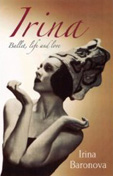 Irina: Ballet, Life And Love - Story of Irina Baronova
Irina: Ballet, Life And Love - Story of Irina Baronova

Irina Baronova's life story is as enchanting as her dancing. Born in St. Petersburg in 1919 and narrowly evading the Russian Revolution, Baronova and her parents escaped to Bucharest, where she learned ballet using the kitchen table as a barre. Spotted by legendary choreographer George Balanchine at the Paris Opéra, she became, at age 13, one of his three famous "baby ballerinas" with the Ballet Russe de Monte Carlo. There she worked with dance legends Léonide Massine, Michel Fokine and Bronislava Nijinska, as well as artists Picasso, Dalí and Matisse. As an actress in Hollywood (often portraying dancers), and then as a star with American Ballet Theatre, Baronova continued to work and play with luminaries Yul Brynner, Clark Gable, Laurence Olivier and Marilyn Monroe. But beyond tales of the personalities she knew, Baronova's prose is a testament to the woman she is: passionate, vivacious and overwhelmingly optimistic, even in the face of divorce, family strife and war. To read her memoir, with its warm personal asides to the reader, is to feel as though one were sitting down with the legend for a glass of champagne—so glamorous and delightful is her story. This is a must-read for lovers of ballet and theater. 84 b&w photos.
|
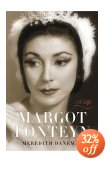 Margot Fonteyn: A Life by Meredith Daneman
Margot Fonteyn: A Life by Meredith Daneman
The legend of Margot Fonteyn has touched every ballet dancer who has come after her, and her genius endures in the memory of anyone who saw her dance. Yet until now, the complete story of her life has remained untold. Meredith Daneman, a novelist and former dancer, reveals the fascinating story of Peggy Hookham, a little girl from suburban England, who grew up to become a Dame of the British Empire and the most famous ballerina in the world.
This completely riveting and definitive biography chronicles Fonteyn’s early years and her intense connection to her mother, the "Black Queen"; her loves in bohemian thirties and forties London; her relationship with her balletic Svengali, Frederick Ashton; her conquest of New York with the Sadler’s Wells Ballet; and her final years in Panama with her husband, Roberto Arias. Daneman reflects on Fonteyn’s "lyricism and limpid purity of line, so potent with theatrical moment that even film cannot capture it" and the world of ballet from the birth of the British Royal Ballet to Rudolf Nureyev, her final partner and rumored lover. Balletomanes and readers of biography alike will applaud Daneman’s vivid, insightful, and highly entertaining work. Based on more than ten years of research and lavishly illustrated with beautiful and evocative photographs, Margot Fonteyn is an exquisite biography that is supremely worthy of its alluring subject.
|
 I, Maya Plisetskaya
I, Maya Plisetskaya
Maya Plisetskaya, one of the world's foremost dancers, rose to become a prima ballerina of Moscow's Bolshoi Ballet after an early life filled with tragedy and loss. In this spirited memoir, Plisetskaya reflects on her personal and professional odyssey, presenting a unique view of the life of a Soviet artist during the troubled period from the late 1930s to the 1990s. Plisetskaya recounts the execution of her father in the Great Terror and her mother's exile to the Gulag. She describes her admission to the Bolshoi in 1943, the roles she performed there, and the endless petty harassments she endured, from both envious colleagues and Party officials. Refused permission for six years to tour with the company, Plisetskaya eventually performed all over the world, working with such noted choreographers as Roland Petit and Maurice Béjart. She recounts the tumultuous events she lived through and the fascinating people she met - among them the legendary ballet teacher Agrippina Vaganova, George Balanchine, Frank Sinatra, Rudolf Nureyev, and Dmitri Shostakovich. And she provides fascinating details about testy cocktail-party encounters with Khrushchev, tours abroad when her meager per diem allowance brought her close to starvation, and KGB plots to capitalize on her friendship with Robert Kennedy. Gifted, courageous, and brutally honest, Plisetskaya brilliantly illuminates the world of Soviet ballet during an era that encompasses both repression and cultural détente.
|
 Henning Kronstam: Portrait of a Danish Dancer by Alexandra Tomalonis
Henning Kronstam: Portrait of a Danish Dancer by Alexandra Tomalonis
The story of Henning Kronstam, one of the greatest dancers of 20th-century ballet, is a testament of professional achievement and personal victory. Overcoming illness, family disapproval, and his own private torments, Kronstam dominated one of the world's most renowned companies, the Royal Danish Ballet, for nearly 30 years—beginning in 1956 when he created the role of Romeo at the age of 20 in Frederick Ashton's Romeo and Juliet until a new generation, trained by him, took the stage. In 1979, he organized and directed the Bournonville Festival, introducing the world to the rarely performed works of August Bournonville, the Danes’ master choreographer.
Alexandra Tomalonis has documented Kronstam's major roles as recounted in his own words, revealing the genius behind the man and his art. A superb technician and impeccable classical stylist, Kronstam was also a great dance-actor. His range stretched from classical ballet to modern dance; his greatest roles included Bournonville's James; Balanchine's Apollo; Petit's Cyrano; and the Old Clown in Murray Louis's Hoopla. His refusal to substitute flash for style earned him the admiration of his peers, and he remains a beacon of artistic integrity and courage to the three generations of dancers he taught and coached.
In the writing of this book, the author conducted 200 hours of interviews with Henning Kronstam and talked with over 100 dancers and choreographers, including many who worked with him. She observed classes and rehearsals at the Royal Danish Ballet over a 10-year period to provide an unusually detailed view of backstage life. More than a biography of one man, this book tells the story of a great dance company. The 155 photographs accompanying the narrative showcase Kronstam's refined classical technique, unparalleled dramatic range, and the theatrical traditions of the Royal Danish Ballet.
|
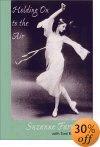 Holding on to the Air: An Autobiography by Suzanne Farrell
Holding on to the Air: An Autobiography by Suzanne Farrell
Suzanne Farrell, world-renowned ballerina, was one of George Balanchine's most celebrated muses and remains a legendary figure in the ballet world. This memoir, first published in 1990 and reissued with a new preface by the author, recounts Farrell's transformation from a young girl in Ohio dreaming of greatness to the realization of that dream on stages all over the world. Central to this transformation was her relationship with George Balanchine, who invited her to join the New York City Ballet in the fall of 1961 and was in turn inspired by her unique combination of musical, physical, and dramatic gifts. He created masterpieces for her in which the limits of ballet technique were expanded to a degree not seen before. By the time she retired from the stage in 1989, Farrell had achieved a career that is without precedent in the history of ballet. One third of her repertory of more than 100 ballets were composed expressly for her by such notable choreographers as Balanchine, Jerome Robbins, and Maurice Bejart. Farrell recalls professional and personal attachments and their attendant controversies with a down-to-earth frankness and common sense that complements the glories and mysteries of her artistic achievement.
|
 Once a Dancer by Allegra Kent
Once a Dancer by Allegra Kent
Allegra Kent joined the New York City Ballet at the age of fifteen and, only two years later, inspired Balanchine's unforgettable The Unanswered Question. Beautiful, sensuous, and mysterious, she quickly became an essential Balanchine dancer-and the story of her personal life is as dramatic as they story of her rise to fame. Her account of a bizarre childhood, a magnificent if curious dance career, a charged, complicated domestic life with photographer Bert Stern, and a never-ending struggle with emotional, physical, and financial pressures is fascinating-as are her portraits of the other great dance figures who punctuated her life, from Balanchine to Baryshnikov.
|
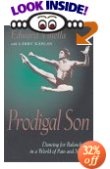 Prodigal Son: Dancing for Balanchine in a World of Pain and Magic by Edward Villella
Prodigal Son: Dancing for Balanchine in a World of Pain and Magic by Edward Villella
An acclaimed New York City Ballet dancer of the 1960s and '70s, Miami City Ballet founding artistic director Villella has always labored in the shadow of two stern fathers - his own and choreographer George Balanchine. His autobiography, coauthored with Kaplan (collaborator with Merrill Ashley on Dancing For Balanchine ), offers a welcome addition to Balanchine chronicles; it could also be considered a dual biography of the dancer and his difficult mentor. Growing up in working-class Queens, New York, the young Villella played sandlot baseball, brawled and boxed, finding his vocation in dance only by chance. He trained at the School of American Ballet, then spent most of his NYCB career "on the outs with Mr. B. Yet their perennial conflicts somehow won Villella's enduring loyalty to the choreographer. And although the narrative is frank, fair, earthy, direct, its peculiar perspective of the dancer as a forgiving underdog superstar gives the story needed bite. Most valuable are Villella's reflections on the ballets Balanchine created on him. A true prodigal, Villella emerges triumphant from Balanchine's unique academy of hard knocks.
|
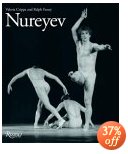 Nureyev by Valeria Crippa
Nureyev by Valeria Crippa
One of the most accomplished names in dance, Nureyev was known for his leaps and fast turns that mesmerized the audience. A charismatic performer and personality, he is credited for expanding the audience for ballet. For the first time, photographer Ralph Fase will offer his intimate images of the famed dancer taken in Paris from 1974-1982.
As chronicled as his career was, these photographs have never been published. Taken on and off the stage, they offer a personal glimpse of the dancer during the most successful years of his career. The book is organized by ballet, offering Nureyev fans specific focus and ballet fans more general ballet history.
|
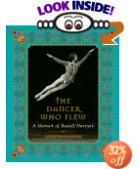 The Dancer Who Flew : A Memoir of Rudolf Nureyev by Linda Maybarduk
The Dancer Who Flew : A Memoir of Rudolf Nureyev by Linda Maybarduk
Few ballet dancers have held the world’s attention like Rudolf Nureyev. Naturally talented and technically brilliant, Nureyev had a charisma that knocked the dancing world on its heels. This stunning book is a very personal glimpse of a unique artist through the eyes of a fellow dancer and friend. Linda Maybarduk was a first soloist with the National Ballet of Canada, one of Nureyev’s favorite companies. She tells the story of her colleague, her mentor, and her dear friend from his late start as a ballet dancer, through his escape to the West and meteoric rise to fame, to the sad ending of his career, when his body, but never his spirit, was defeated by age and illness.
Complete with a glossary of ballet terms, a useful reading list, and index, this is a book for both those who dance, and those who wish they did.
|
 Nureyev: His Life by Diane Solway
Nureyev: His Life by Diane Solway
Biographer Diane Solway, who wrote Dance Against Time, a biography of Joffrey Ballet dancer Edward Sterle, has produced an exhaustively comprehensive report on Nureyev's life. The book's most important accomplishment is that it succeeds in correcting many of the myths that still cloak the story of Nureyev's life--she credibly suggests, for instance, that his defection was not premeditated. The flamboyant dancer, known to wear jeweled jock straps, was responsible for propagating most of the stories that grew up around him. He published a ghostwritten autobiography rife with inaccuracies in the early '60s, and much of the information about his first 20 or so years in the Soviet Union has remained inaccessible until very recently. Solway traveled to Russia to piece together her subject's early life with recently declassified documents and interviews with his friends, family, and even a few detractors. She also drew from another rare book, Rudolf Nureyev: Three Years in the Kirov Theater. The result is a biography that objectively addresses the facts and fictions of an extraordinary life to create a vivid and balanced portrait.
|
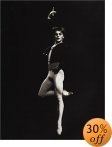 Baryshnikov: In Black and White by Joan Ross Acocella
Baryshnikov: In Black and White by Joan Ross Acocella
Baryshnikov in Black and White presents, in over 175 photographs, the remarkable breadth of his achievement between the years 1974 and 2000. From his legendary roles in the classic ballets Giselle and Don Quixote, to his work with some of the world's greatest contemporary choreographers, Baryshnikov is shown here in both rehearsal and performance. Captured by the leading dance photographers, his vitality and genius are evident on every page. With an inspired and richly detailed essay by the New Yorker dance critic (and Baryshnikov biographer) Joan Acocella, a complete chronology of his roles, and extensive annotated captions, Baryshnikov in Black and White is the definitive book on his remarkable career in the West.
|
 Mikhail Baryshnikov: Dance Genius (Giants of Art and Culture) by Bruce Glassman
Mikhail Baryshnikov: Dance Genius (Giants of Art and Culture) by Bruce Glassman
Born in the Soviet Union, Mikhail Baryshnikov was a teenager when he discovered his gift as a dancer at a nearby ballet school. He soon joined the Kirov Ballet, but felt restricted by the tight controls of communism in the USSR. In an exciting but dangerous escape, Baryshnikov eventually defected to Canada. In the United States—in addition to continuing his dance career—he became a choreographer, artistic director, and actor.
|
 Vaslav Nijinsky: A Leap into Madness by Peter Ostwald
Vaslav Nijinsky: A Leap into Madness by Peter Ostwald
Nijinsky (1890-1950) remains, by reputation, the outstanding male dancer of at least one century, and a pathbreaking choreographer as well. Yet his life dramatically demonstrates the uncertain line dividing genius and madness, as psychiatrist Ostwald ( Schumann: The Inner Voices of a Musical Genius ) here shows. The "god of dance" spent 30 of his 61 years in the grip of infantile rages and catatonic withdrawal; neither Freud, institutionalization, sedation nor countless insulin shock-treatments could halt his increasing derangement. Using Nijinsky's own notebooks to augment the existing medical evidence, Ostwald examines the dancer's family history, the effects of his personal and professional subjection to Russian impresario Serge Diaghilev--his Svengali-like mentor and lover--and Nijinsky's troubled marriage to a woman perhaps nearly his equal in self-destructiveness. Medically thorough Ostwald undeniably is; his account is interesting at many points. Regrettably, though, this portrait of a savagely intense, erotically charged danseur is written with all the excitement of a doctor's report.
|
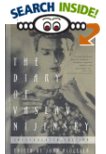 The Diary of Vaslav Nijinsky : Unexpurgated Edition
The Diary of Vaslav Nijinsky : Unexpurgated Edition
Nijinsky's diary was first published in 1936, in a heavily bowdlerized version that omitted almost half of his text. The present edition, translated by Kyril FitzLyon, is the first complete version in English and the first version in any language to include the fourth notebook, which was written at the very edge of madness. It contains Nijinsky's last lucid thoughts--on God, sex, war, and the nature of the universe, as well as on his own broken life. In her Introduction, the noted dance writer Joan Acocella explains the context of the diary and its place in the history of modernism.
|
|

